Upma is a popular South Indian breakfast dish consisting of a thick porridge made from cooked grain, vegetables, spices, and fresh lemon that can be ready in just 15 minutes.
Jump to Recipe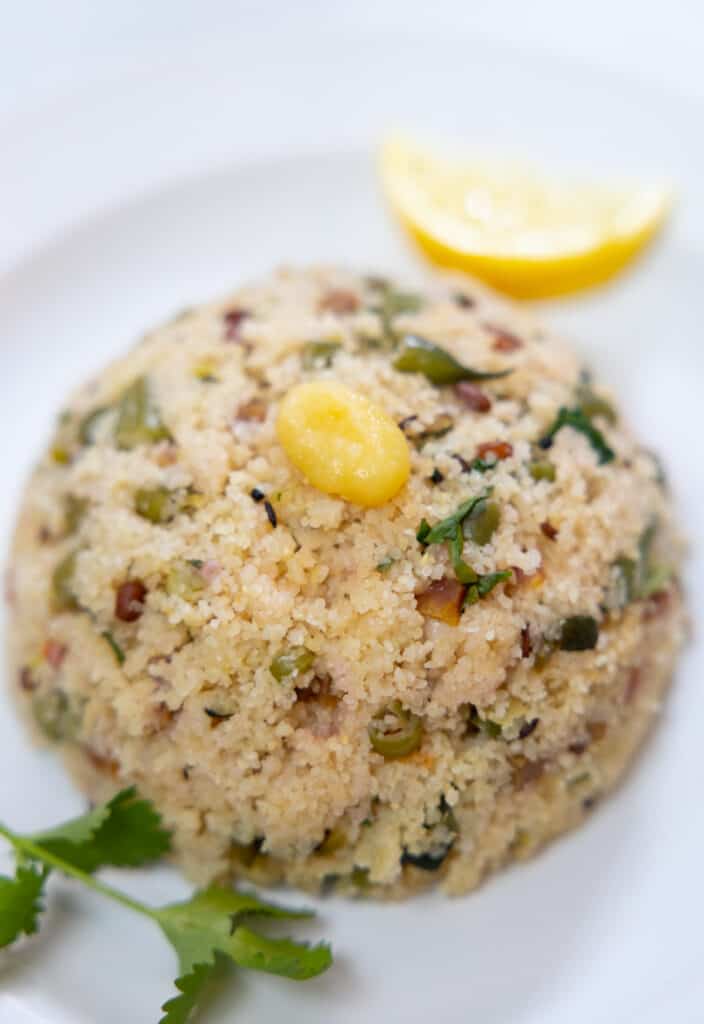
Upma is typically made from coarse wheat, rice, or corn flour, but it can also be made with vermicelli noodles. There are hundreds of variations of upma.
Just let go of the idea of a sweet breakfast, and think savory porridge …
Now imagine that by learning how to make this one dish, it could open up a world of possibilities for breakfast, lunch and supper.
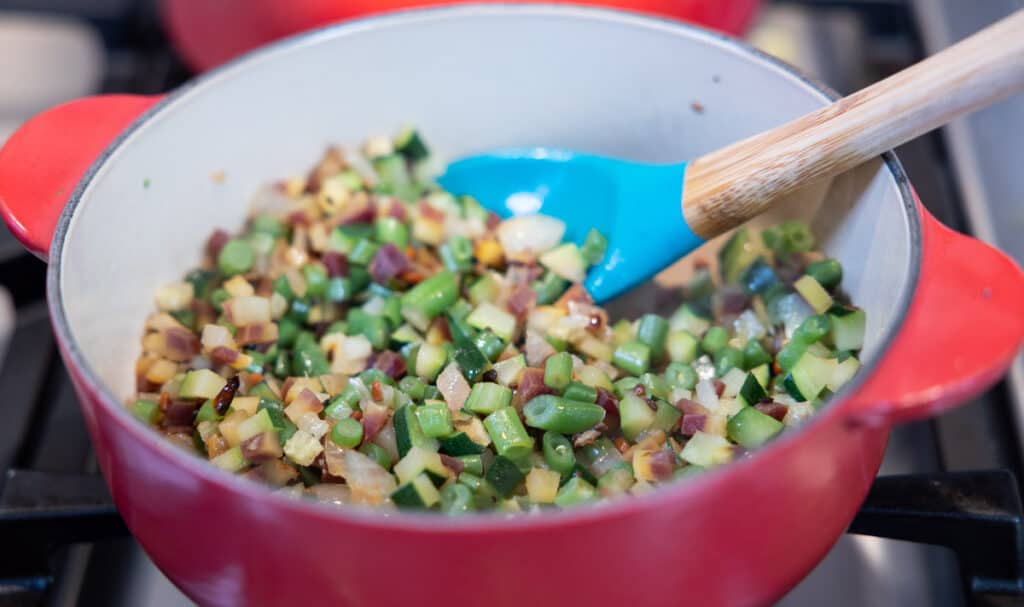
Today’s upma recipe is mixed vegetable semolina upma made with roasted wheat.
This is a dish I return to again and again because it’s so comforting.
Now, for those of you who are avoiding wheat for any reason, you can easily substitute the wheat with rice or corn. All you need is a coarse flour made from whole grain.
Jump to:
Health benefits
What I love about this dish is how light, crunchy, and fluffy it is. The taste also comes across as lemony and salty.
For me, upma can be a substitute for salt and vinegar potato chips, which I am known to crave when I feel frazzled.
A frazzled nervous system is a Vata dosha imbalance. It’s an imbalance of air and ether, and indicates insufficient heavy, grounding qualities in mind and body.
Semolina upma works because the combination of wheat, lemon, and salt is exceptionally soothing for Vata dosha.
Wheat is a recommended food for Vata, since it is heavy, grounding, and nourishing.
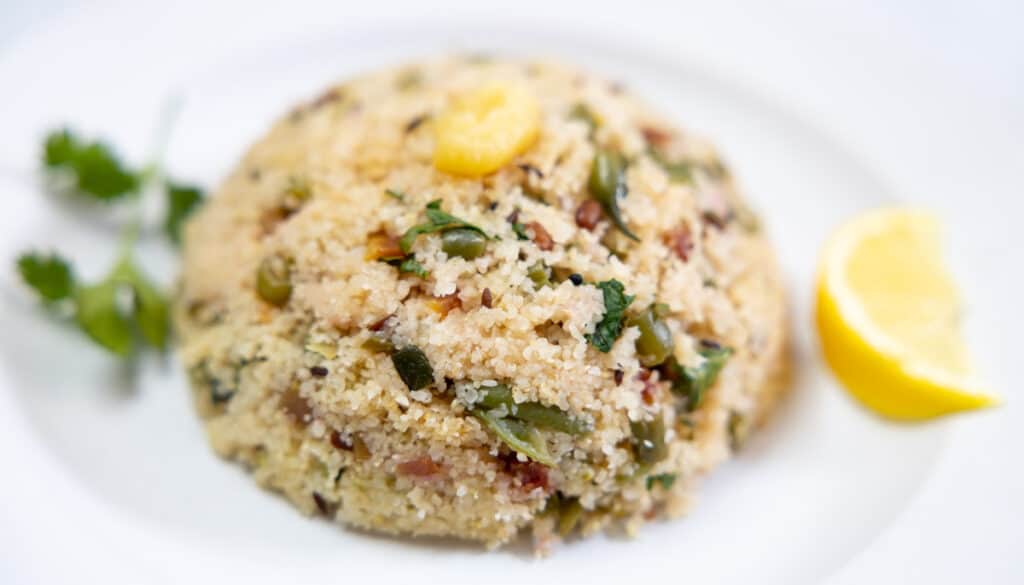
Vata types tend to get constipated, and the fiber in wheat adds bulk to stools and helps to move things along.
Lemons and limes can be used to treat constipation because the sour tastes draws water to the colon to release impacted stools and smooth elimination.
People with a lot of fire or heat in their bodies (Pitta) also do very well with wheat, because they need something heavy and filling to quell their strong metabolism.
People with a lot of earth in their body type (Kapha) can still enjoy upma when they have good hunger, and in combination with other lighter dishes.
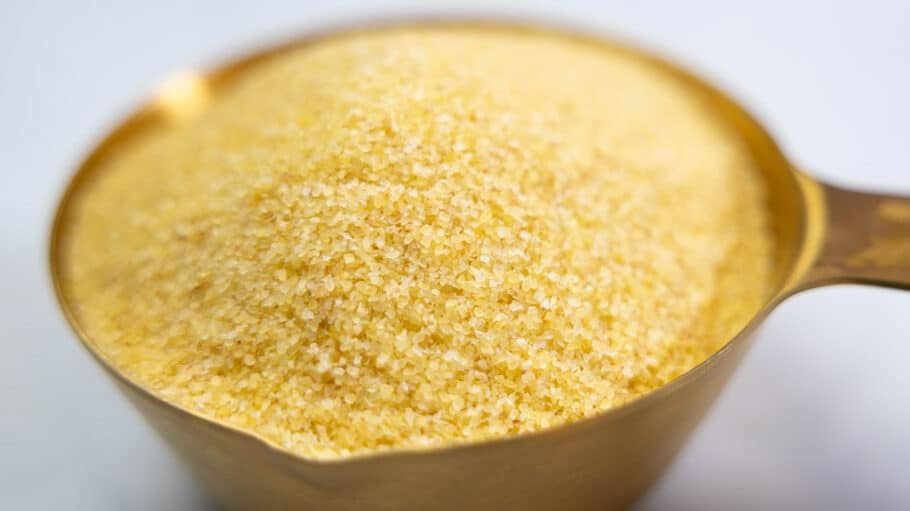
What is semolina?
Semolina is a confusing term because it refers to a few different related things.
Usually, semolina refers to coarsely milled whole durum wheat.
If you buy an Indian brand of semolina, you can almost be certain it is made with durum wheat.
Products that originate in North America are most likely made from modern wheat. There is a significant difference, which I get into more in the next section on durum wheat.
Semolina also refers to the course millings of other varieties of wheat and other grains, such as rice and corn.
This means when you are purchasing semolina, you want to be mindful of what you are actually getting.
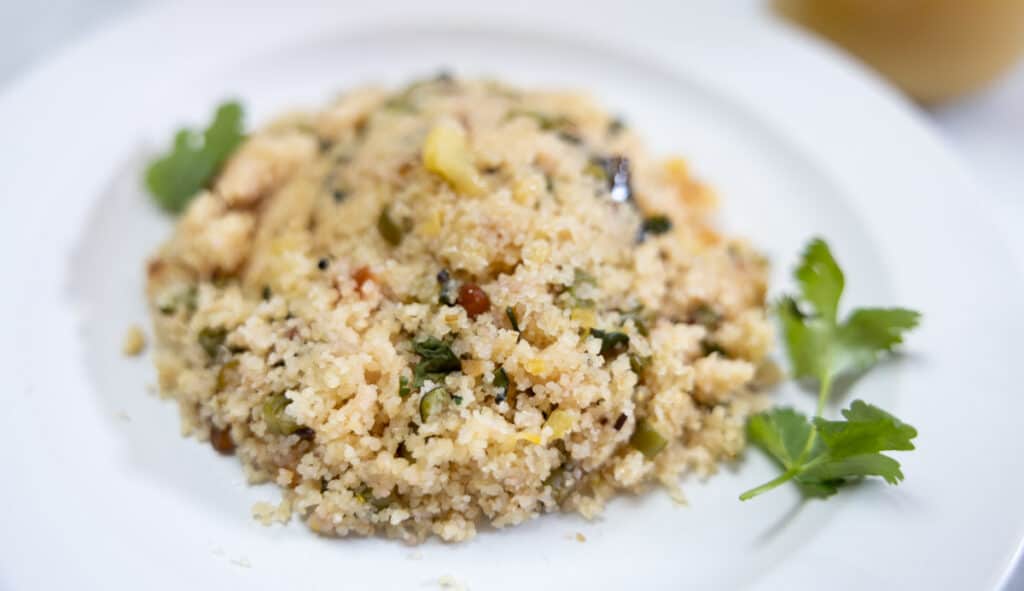
Why durum wheat?
Durum wheat is a relative of the ancient emmer wheat, so many experts believe that despite its slightly higher gluten content, it’s actually easier to digest.
Durum wheat is cultivated in the Middle East and India, where it is used to make couscous, bulgur wheat, kibbeh, upma, flatbreads, pizza dough, and other breads.
Good quality pastas from Italy are made from durum wheat semolina.
Durum wheat is similar to regular wheat in that it is a good source of protein, fiber, iron, zinc, and folate.
However, is is significantly higher in protein than regular wheat (17% versus 14%) and significantly lower on the glycemic index (47 versus 68).
Does this make you want to try semolina made from durum wheat? Keep reading. There are even more reasons to consider it.
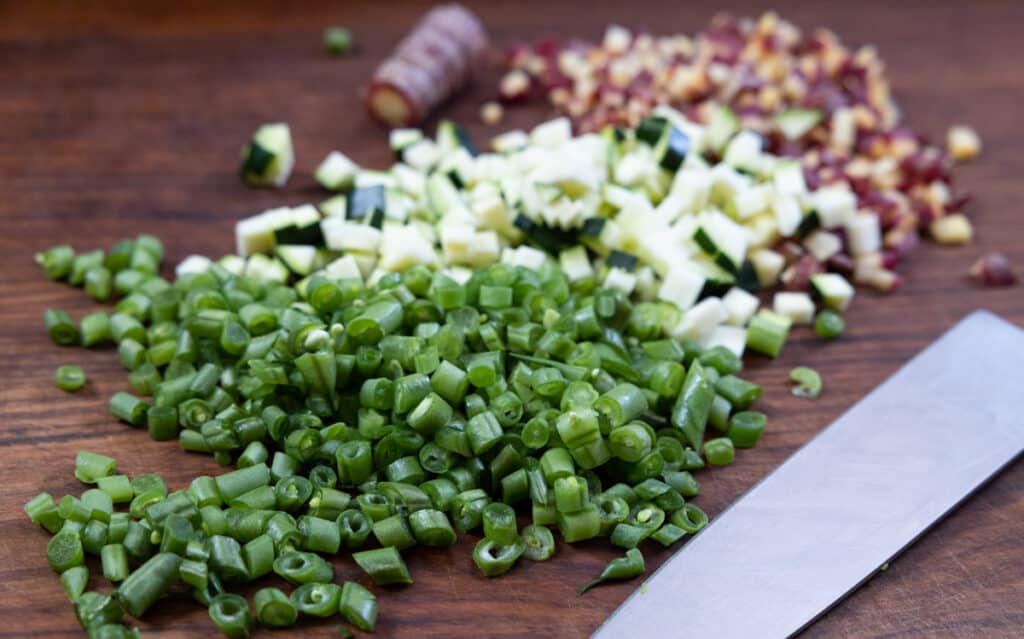
Digestibility
When wheat berries are processed and milled into semolina, the wheat becomes much easier to digest.
This is due to the mechanical breakdown of the wheat berry, so there’s less for your digestive system to break down.
Upma also meets all five qualities of easy-to-digest food that I teach in my signature 6-week program Happy Eater.
The first principle is Cooked. Ayurveda says that cooked food is easier to digest than raw food.
The second principle is Unctuous, and this refers to the use of healthy fats. Fats are hydrating and lubricating, and they make food more palatable and digestible.
The third principle is Hydrated. You can see in upma that the wheat is hydrated, much more so than bread or crackers.
The forth principle is Simple. You can see that there are only a few ingredients in upma, and the combination is simple.
The fifth principle is Spiced. Spices provide intelligence to the body, helping it to perform the complex work of digestion and assimilation of the nutrition from your food.
Overall, upma is soft, smooth, and easy, whereas bread is more sticky, gooey, difficult and rough.
So, for those of you who are not allergic to gluten, but you generally avoid eating bread because you find it difficult to digest, you might want to try upma and see if it satisfies your craving, and helps you ground your nervous system.

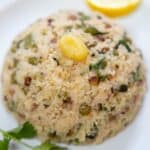
Vegetable Upma (Indian Savory Breakfast)
Helpful Kitchen Tools:
Ingredients
To start the upma
- 1 tablespoon ghee
- ¼ teaspoon black mustard seeds
- ¼ teaspoon cumin seeds
- 1 teaspoon split urad dal, optional
- 1 teaspoon chana dal, optional
To add to the upma
- ½ cup onions, finely chopped
- 1 teaspoon ginger, finely chopped
- ½ teaspoon green chili or jalapeño, finely chopped
- 4-6 curry leaves, optional
To add
- 2 cups vegetables (carrots, zucchini, green beans, frozen green peas, etc.)
To add
- 1 ¾ cup water
- ½ teaspoon salt
To add
- 1 cup roasted wheat semolina
To finish
- ¼ cup cilantro, chopped
- ½ lime or lemon, freshly squeezed
Instructions
Prepare the vegetables
- Finely chop onions, ginger, and green chili.
- Finely chop the 2 cups of vegetables you selected. Take out the frozen green peas.
Start the upma
- Get out the spices you need to start the upma. Place a medium saucepan on medium heat. Add ghee, mustard seeds, cumin seeds, and optional urad and chana dal. Stir continuously, until the mustard seeds begin to pop and the dal turns golden brown.
Add to the saucepan
- Add the onions, ginger, green chili, and optional curry leaves. Sauté, stirring continuously, for 2-3minutes, until lightly browned.
- Add the vegetables and stir well. Add a few tablespoons of water, cover, and cook for 5-10 minutes, until the vegetables are starting to soften.
- Add 1 ¾ cup water along with ½ teaspoon salt to season the water. Turn up the heat and bring to a boil. Reduce the heat to low, then add the roasted semolina slowly, while stirring continuously. This is to avoid lumps. A wooden spoon will work well for this.
- Once all the semolina is incorporated, cover, and cook for 5 minutes, until all the water is absorbed. Turn off the heat, and let it sit, covered, for another 2 minutes.
- Stir in the fresh cilantro and lime or lemon juice. The semolina will be light and fluffy. Taste, and add more salt, lime juice, or cilantro if needed.
Notes
Semolina
The semolina recommended in this recipe is a coarse milling of durum wheat. At an Indian store, you will find Roasted Semolina Upma, or it will be labeled sooji, soji, or suji. A conventional grocery store will sell Cream of Wheat, which is a little finer than what I used. It will also work. You can cook on low for 3 minutes instead of 5. Cream of wheat will not be durum wheat though. Note that cream of wheat is sometimes referred to as farina.Gluten-free
For gluten-free options, look for Rice Rava at the Indian store. Organic Corn Grits can also work for this recipe, although you might need to adjust the cooking time based on the package instructions. Bob’s Red Mill also sells Creamy Buckwheat Hot Cereal, which would also work.Nutrition
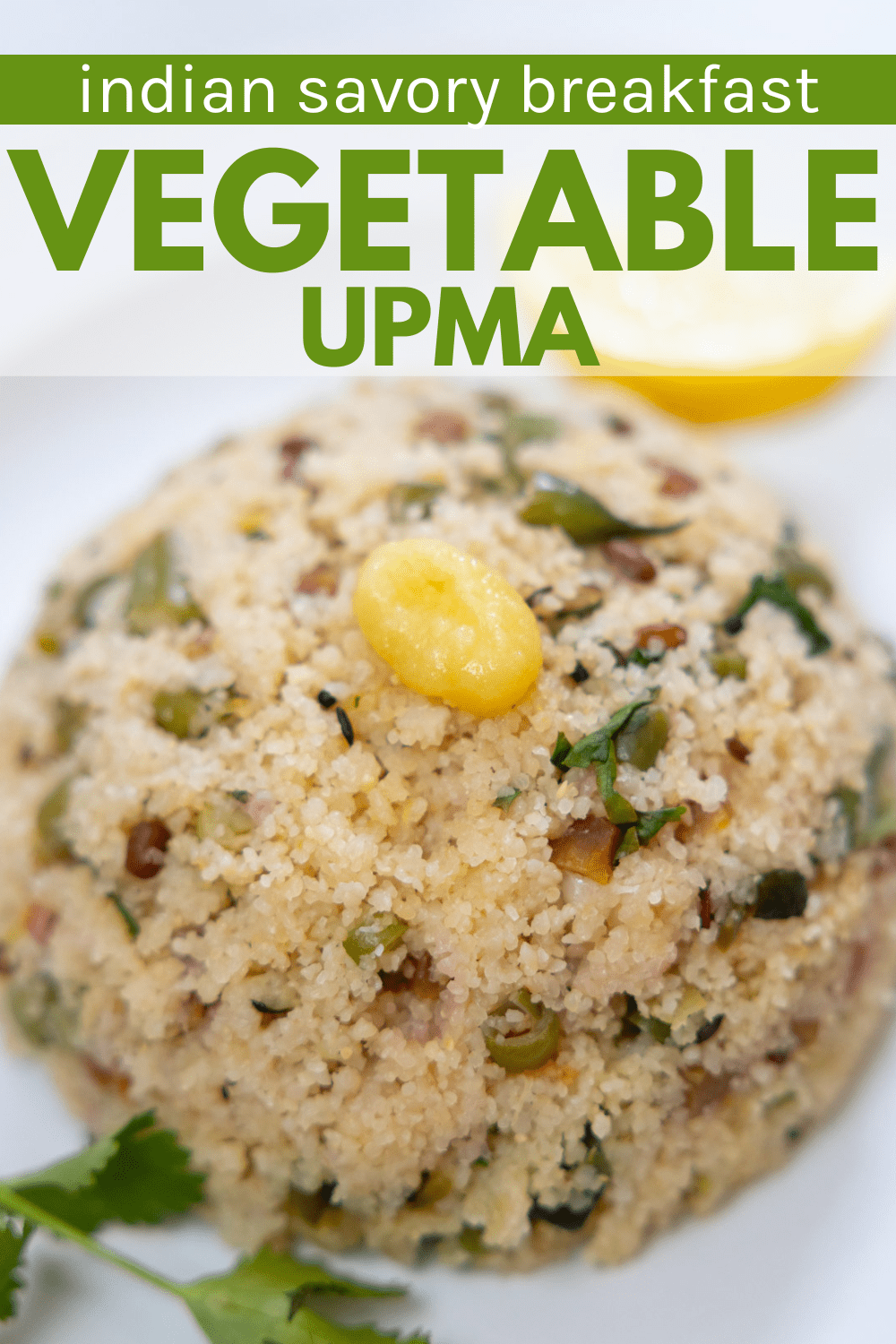



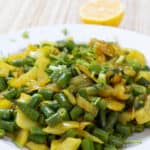


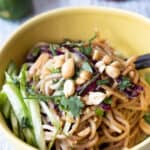

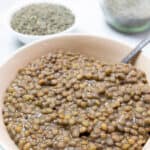
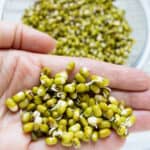
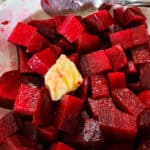


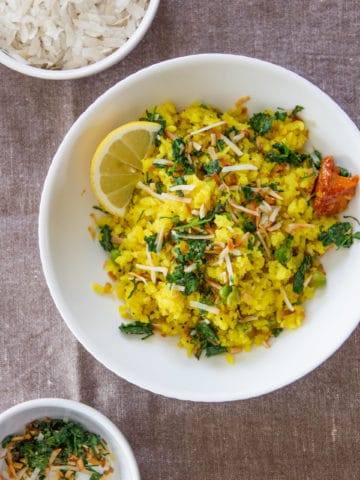
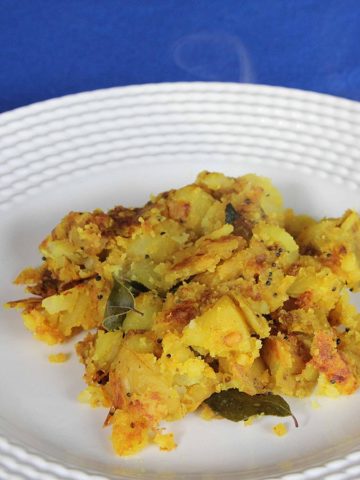
Joanne
I enjoy this more and more each time I make it! Tasty and very satisfying. Thanks, Andrea!